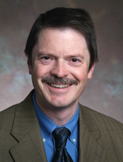This week’s issue of the Atlanta Business Chronicle spotlights the winners of its annual Healthcare Heroes Awards, recognizing the contributions of top medical professionals in the Atlanta health care community. Emory was well represented again this year among the impressive list of winners and finalists. Winners included:
- Thomas J. Lawley, MD, dean of Emory University School of Medicine, won in the Physician category for his role in guiding Emory to a top 20 research ranking among U.S. medical schools and his work as a tireless advocate for Grady Hospital when it recently faced possible closure.
- Ursula Kelly, PhD, assistant professor, Emory University School of Nursing, took the top prize in the Allied Health category for her work at the Atlanta Veterans Affairs Medical Center with female veterans suffering from post-traumatic stress disorder and sexual trauma. (see Emory article)
Finalists included:
- Linda Cendales, MD, assistant professor of Surgery at Emory University School of Medicine, nominated in the Healthcare Innovations category for successfully performing the state’s – and one of the nation’s – first hand transplants on a college student from Orlando, Fla. (see Emory article)
- Katherine L. Heilpern, MD, professor and chair of the department of emergency medicine, nominated in the Physician category for her contributions to emergency and trauma care and for her leadership among 5 hospitals in Metro Atlanta which receive 250,000 patient visits per year.
- Curtis Lewis, MD, assistant professor of radiology, Emory University School of Medicine, nominated in the Physician category for his management and training of physicians and residents in his role as chief of staff and senior vice president of medical affairs at Grady.
















